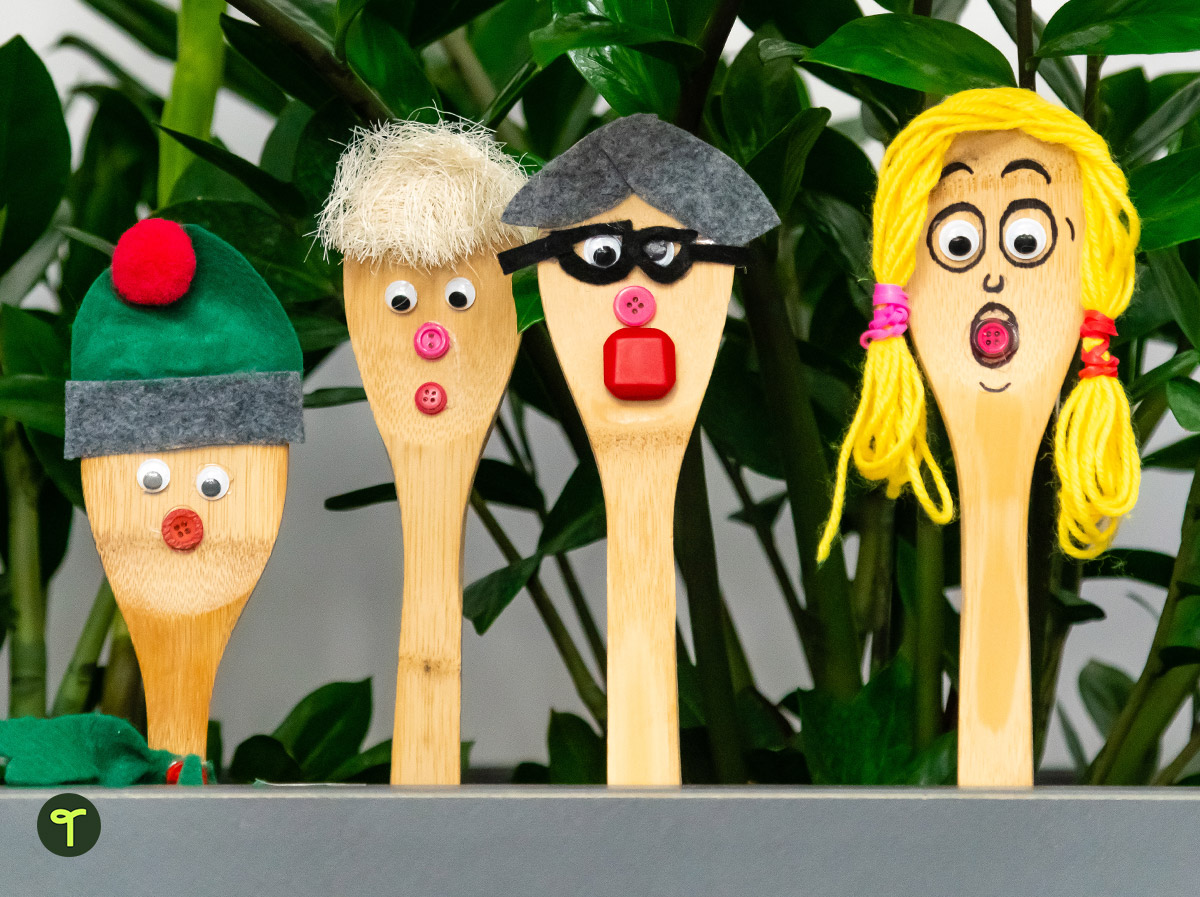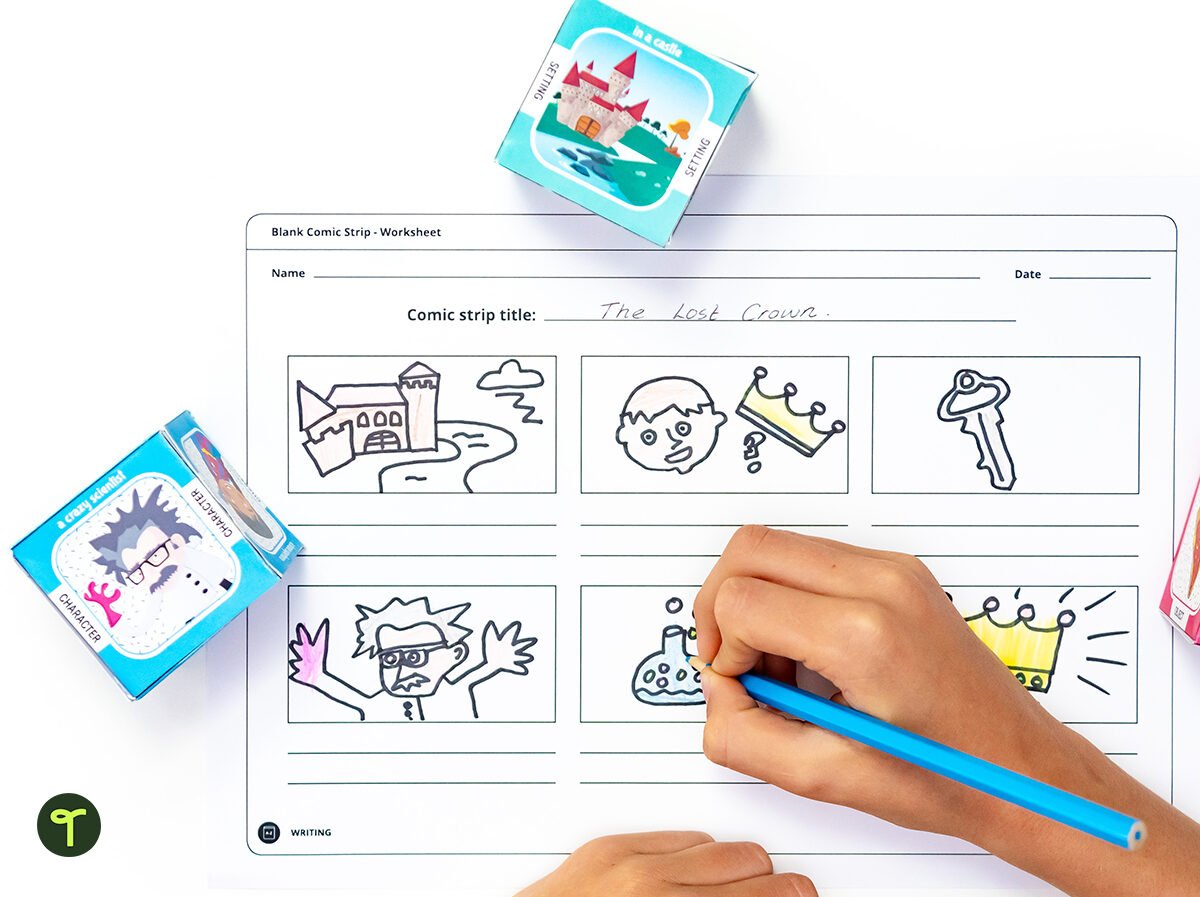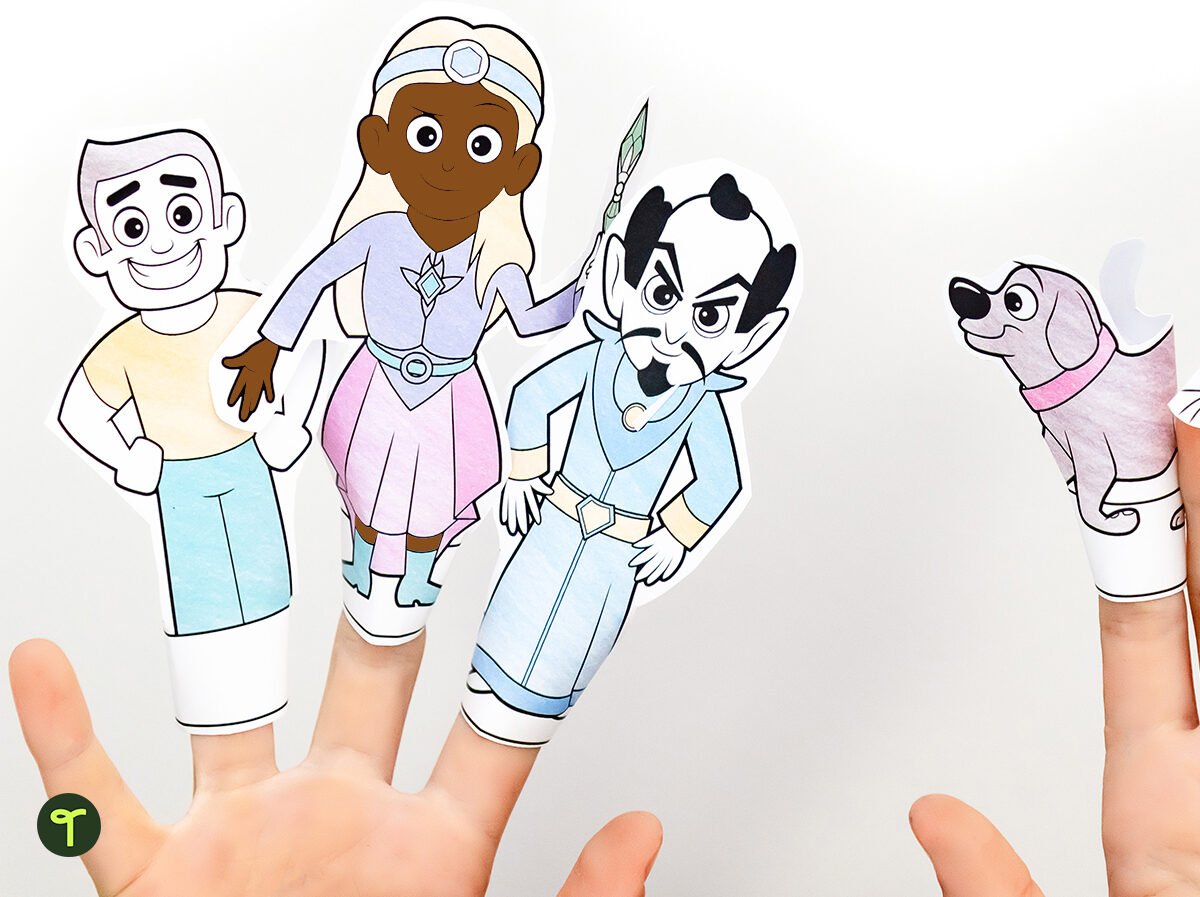Kids love to tell stories — every teacher who has learned a “surprising” amount of information about a child’s weekend knows this. It’s that love of the story that makes teaching storytelling a whole lot of fun for teachers, and we are here for it! We’ve pulled together some of our favourite creative and interactive storytelling ideas for kids to include in your lesson planning!
Why Do We Teach Children Storytelling?
When you’ve got a class full of kids who like to tell their own big fish tales, teaching them the art of storytelling may be fun, but there’s plenty more to it than that. As kids learn storytelling, they become better listeners. But there’s also ample evidence that they have overall improved literacy skills with improvements in both reading and writing. When researchers looked at the effects of oral storytelling on the skills of a group of second-graders in a Title 1 school, for example, they found the story sequencing abilities, critical thinking, and cognitive engagement — all tied to oral storytelling.
It doesn’t stop there. Oral storytelling can help young writers find the language they need to write their narratives, can help them learn new vocabulary, and also gives them an understanding of how to structure a story and an understanding of what it means to tell a story — or write one — for a particular audience.
Teaching Kids Storytelling
Focus on Personal Storytelling
They say you should write what you know, and getting started with kids’ own stories is an obvious entrance into the world of storytelling! Because personal narratives come more naturally to many kids than writing fictional texts, students are able to gain both confidence and competence as writers and storytellers.
These personal stories help you get to better know your students and also help them see that their thoughts, opinions, and personal experiences matter — as do they — helping kids feel more at home in the classroom environment.
Scaffold their personal narratives with a printable recount writing template!
Incorporate Digital Storytelling
It’s easy to think about storytelling simply as having your students stand in front of the class to read something they’ve written or even recite a story they’ve memorized. But digital storytelling is a growing art form that’s got a lot to offer to students who not only work on developing the arc of a story but also develop their tech skills along the way.
Integrating graphics and sounds and using computers or other devices, students learn to better organize their thoughts and the elements of story development as they piece together the various parts of a digital story.
Try some of these free apps with your students to get them started telling digital stories:
- Flip Grid — It doesn’t have a lot of bells and whistles, but Flip Grid allows kids to record videos of themselves telling a story, which makes it a good starter app before they start pulling in more advanced digital storytelling methods.
- Toontastic — Because it runs on many Chromebooks as well as tablets, this free Google-created app works well for the classroom and allows students to plot stories, animate, narrate, add soundtracks, and more as they create digital stories.
- Make Beliefs Comix — Kids can tell stories in comic form with the free app or use the Make Beliefs website to build their stories.
Storytelling Activities for Kids
Spoon Puppet Character Development
Hit the cheap shop for wooden spoons that students can turn into characters in their very own play to practice character development! Break kids into small groups to plan and rehearse a storytelling performance, provide each student with a wooden spoon and a range of craft materials. Encourage your students to plan and create an interesting wooden spoon character by considering the characters’:
- name
- age
- gender
- appearance
- personality
The next step is to encourage your students to collaborate with their peers and to find other wooden spoon characters that would make a good storytelling match! Next, it’s time to get planning and rehearsing before having a showdown at the class wooden spoon storytelling bonanza!

Storytelling Dice Activity
Use this teaching resource in the classroom in your writing centers. Print, cut, and construct the setting die, character die, and object die. Next, encourage your students to have fun by rolling each die to generate ideas for an action-packed narrative.
Use the Story Building Dice Activity in conjunction with Blank Comic Strip Template for a fun and pressure-free storytelling activity.
Storytelling with Finger Puppets
Don’t be fooled, finger puppets are not just for primary students! The tales that these storytelling finger puppets tell can be as sophisticated or simple as your students like.
- Introduce the finger puppets. Leave the name and characteristics of each finger puppet open to students’ interpretation.
- Remind your students of a basic narrative structure and how it includes exposition, rising action, climax, falling action, and a resolution.
- Encourage your students to work with a partner to choose 3 or more finger puppets and plan a simple narrative. Use a Narrative Plot Structure Template to support your students in the planning stage.
- Encourage your students to work with their partners to rehearse a puppet show and to explore the use of voice and expression.
- Encourage more confident students to perform their finger puppet storytelling with the class.
Storytelling Stones
The act of telling stories is a tradition as old as humankind. Storytelling creates a connection between the storyteller and the listener, and it also promotes listening skills. Storytelling stones are a collection of small stones with pictures on them that can be used as storytelling prompts. They can be used as an effective way to create collaborative stories in small groups.
Ask students to collect 8-10 flat and smooth stones. Next, ask them to draw simple pictures on the stones using permanent markers, chalk pens, or paint (if the stones are dark, it’s a good idea to paint the background in white paint first). Storytelling stones can be used in a few different ways:
- Encourage students to arrange their own stones in an order that tells a story and to share the story.
- Work in a small group to take turns selecting a stone to tell a collaborative imaginary tale.
- Working in a small group, place all of the stones face down. Take turns turning over a stone to continue a funny story.

One Word Story Active Game
One Word Story is an active game that can be used at any time and encourages creative storytelling and teamwork.
Before the game begins, explain the rules of the game. Arrange the students into a seated or standing circle. Establish who will begin the story and which direction the story will travel (clockwise or anticlockwise).
How to Play:
- The first person begins by saying a single word.
For example: “there”. - Whoever is next in the circle says another single word that makes sense following the previous word. For example: “was”.
- Continue around the circle with each person saying a single word with the collective aim of telling a coherent story.
Why not break tradition and start a story with an onomatopoeic word?
See dozens of imaginative prompts and story starters for your students!
Banner image via Shutterstock/nimito









This was a fabulous resource ( particularly the wooden spoon characters) that will help my Early years HASS students with limited literacy skills, share their stories . Very Grateful
Hi Jolanda, thanks for your positive feedback. I hope that your early years HASS students have lots of fun trying out some of these ideas for storytelling. Have a great day! Ali